Artist’s Life – Starting New Media Art
This week, I share my latest new media art and thoughts about my career as an artist. This is a sequel to the blog post called Beginner’s Video Art that was published last month.
Unstill Still Life – Video Art
The video above is my latest artwork “Unstill Still Life.” I have done this largely by programming. I have developed generative algorithms that create and alter shapes. I have designed the individual shapes with a 3D modeling program called Blender. The models and the code are put together with the Unity Engine which is a software environment for developing games.
Inspiration from an Old Painting
With the artwork, I participated in the Finnish National Gallery’s Web3 community Alusta challenge called “Nature and Nourishment.” The Finnish National Gallery has many copyright-free images and the organization encourages artists to use them for creating new media art.
I have taken inspiration for the colors and surfaces, as well as the concept itself, from Fanny Churberg’s 1876 painting “Still Life with Vegetables and Fish.”
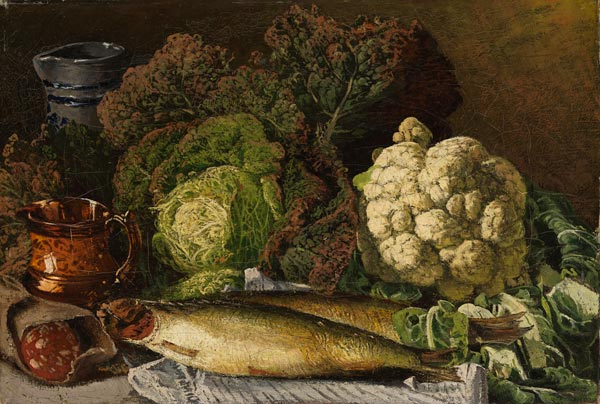
I love old paintings, so this challenge was made for me. It’s so interesting to examine the brush strokes and think about the 3-dimensional shapes that they are related to. And I have so much to learn in making generative art, that I need small challenges to keep heading forward.
I Will Continue Painting, But …
I am still going to continue painting traditionally but I also want to start a career in new media art. I want to bring back my skills in programming from the years when I was a software engineer and use those for creating art. I also have a degree in Industrial Design that helps a lot with 3D modeling. The grant that I received from The Finnish Cultural Foundation has enabled me to develop my style in new media.
But all this is not only exciting but hard too. Do you know that feeling that comes when you have to start life over again? There is enthusiasm in the air, but also some “oh no”.
Building a CV
For a full-time artist, most opportunities are based on a CV.
That was not a problem when I graduated in software design in 1996. I thought: “I have plenty of time to grow my CV.” Then, when I graduated as an industrial designer in 2009, life seemed to be halfway over, but I was able to get quite a decent CV by combining some old and new projects.
When I started working as a full-time visual artist in 2014, I didn’t think about CVs at all at first.
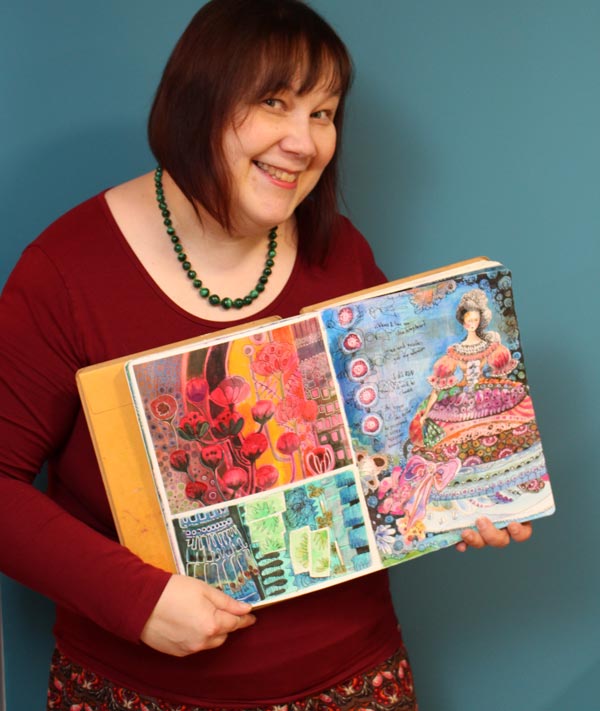
The picture above is from 2015 when most of my art was in art journal pages.
But when I moved forward in painting, the reality hit me – it was very hard to get accepted to exhibitions and organizations without a CV. Mine was practically blank at first, and it has taken a lot of time and effort to add rows to it.
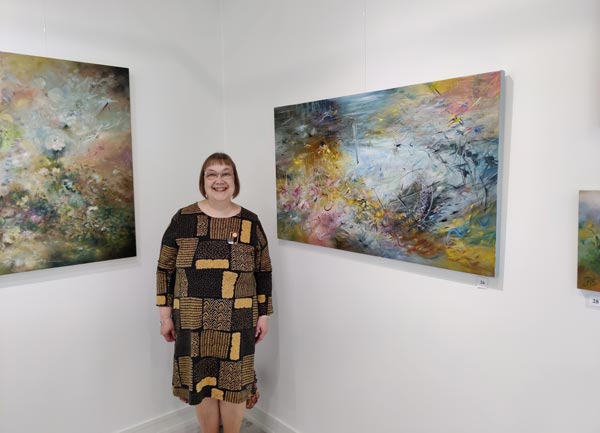
The picture above is from last summer at the exhibition organized by The Albert Edelefelt Foundation. See more pics in this blog post!
New Media Art – New Career?
And just when I thought that life was almost over at the age of 55, this new media digital art came into my life and it hit me – I’m a beginner again with an empty CV. So, I need and want to participate in challenges, competitions, and exhibitions, to get accepted again. And I want to believe that I still have time to create this new kind of art, not only paintings.
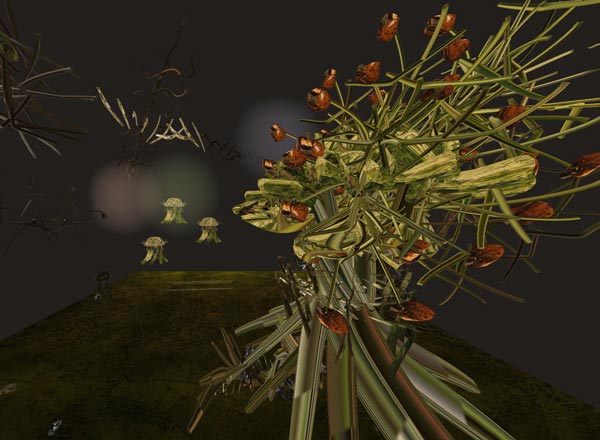
Some leaves of the big plant are connected to an invisible virtual camera that moves around and sends a mirror image to them.
I learn new things about generative art every day and I am amazed that I have been given this long life to experience it. Gratitude is the overriding emotion that emerges from this new beginning. I am lucky in what I have seen in the development of information technology and what I have been able to develop and be involved in developing in the past. I want my future CV to tell the story of a girl who wanted to become an artist as a child, who fell in love with computers as a teenager, and who finally has the artistic vision and the technical tools to combine the two.
Looking Back Enables Seeing Forward
If you have been following my blog for a while, you must have noticed that my blog posts are often self-reflective like this one. Visual art-making needs self-reflection too. It’s useful to go back and see how things have changed to make future changes and take steps forward.
With the newest course Liberated Artist Revisited, I invite you to paint with me – to follow directions from Paivi many years ago, and then create more with the current Paivi. At the same time, you can ponder, how your art-making has changed and will change.
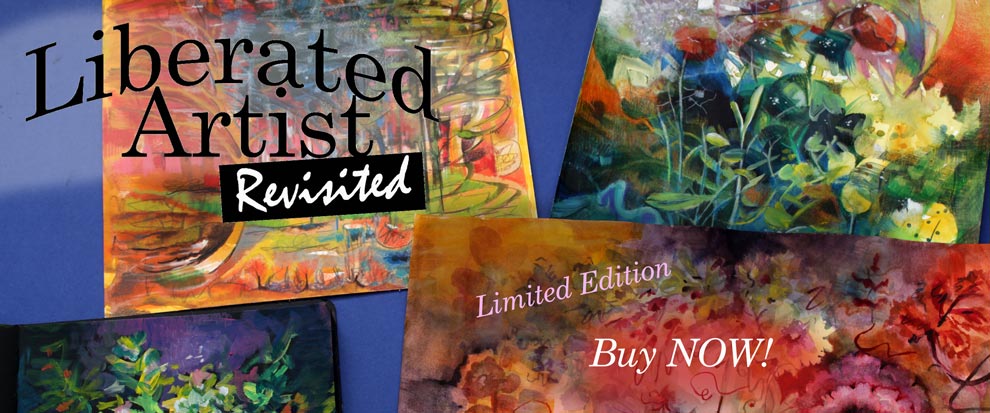
Liberated Artist Revisited is a limited edition – only available for purchase until the end of March 2024! >> Buy Now!
Liberated Inspiration – Painting Freely
This week, I talk about liberated inspiration and share what I discovered about 8 years ago.
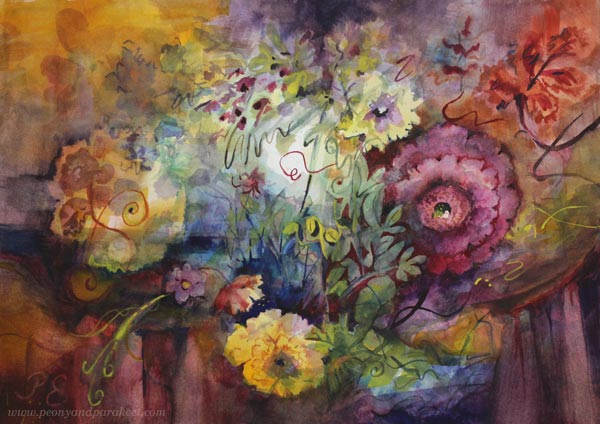
>> See more pics at the Taiko art store!
Liberated Inspiration from 2015-2016
Recently, I have been thinking a lot about the years 2015 and 2016. Then I combined watercolors, acrylic paints, and colored pencils for intuitive still lives. At the same time, I thought about how complex the forms of nature are and how I could create a more finished impression with nuances.
I have those pieces saved in an album. Watch a short video of me browsing the folder! Here you can see only a small part of the pieces – the album is thick!
Liberated Inspiration
These last couple of pieces shown in the video have stuck in my mind. This one:
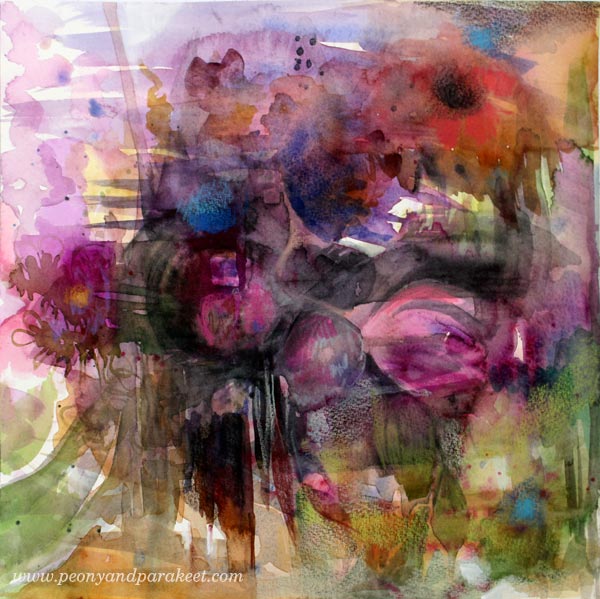
See the blog post about making this!
And this one:
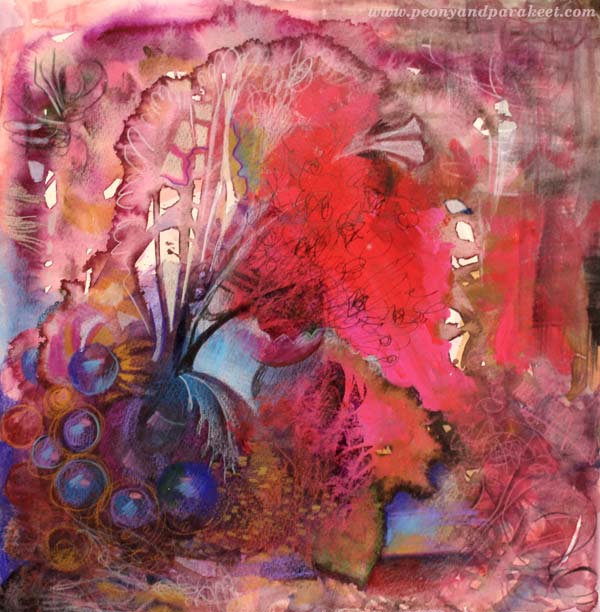
See the blog post about making this!
Both of these have a dark and romantic atmosphere that can be seen often in historical paintings, but there’s also liberated inspiration – meaning that no one dictates what that kind of painting should or shouldn’t have.
You can be inspired by what you have seen, but only pick the atmosphere from it.

I like this kind of inspiration the most. That you are inspired by something, but don’t take it too literally. Liberated inspiration boosts your enthusiasm but doesn’t tell what the final image should be.
I wanted a similar romantic yet liberated feel for this watercolor painting.
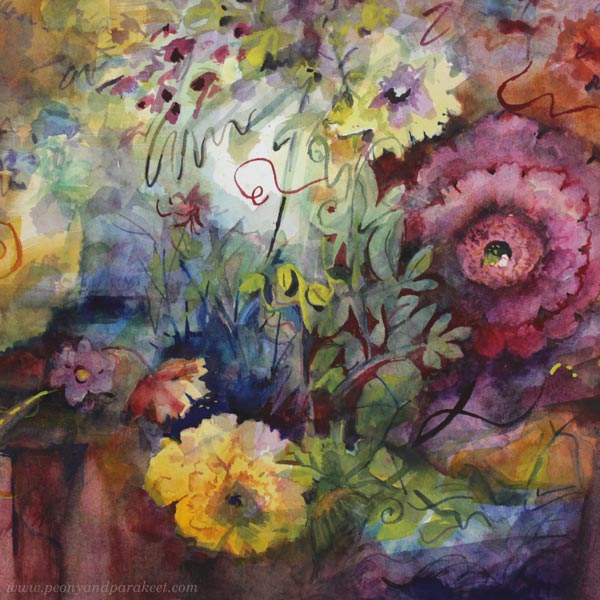
Imagine someone saying: “dinner is served” and bringing you to a table where good company and classical music would make the world look like it’s full of possibilities.
Painting Freely in Watercolor
It has always been important for me to paint freely without models and let randomness meet my imagination. In 2015, I developed a course called Liberated Artist. It was about creating a mess first and then solving it. It was a fun course.
I started this watercolor with a similar mess.
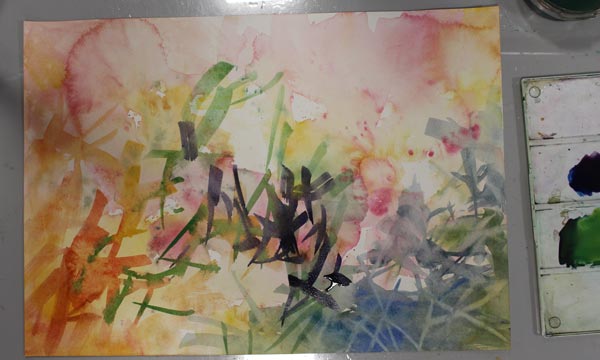
Then I switched to thinner brushes to finish the image.
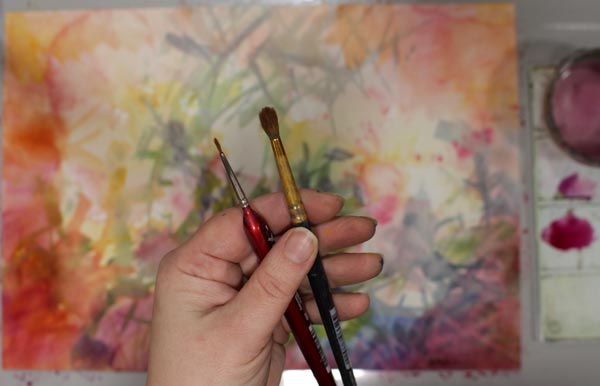
I like the way the imaginative scenery, flowers, ornaments, and the table came all together into one image.
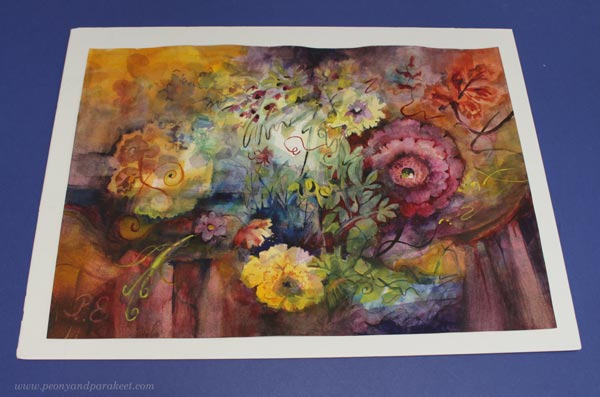
Coming Up: Liberated Artist Revisited
The Liberated Artist course is no longer available, but I got the idea to redo a small part of the course. In that, Päivi from 2015 will teach Päivi from 2024! I will follow the old instructions again, but like an experienced student, I also offer a bit of my current knowledge.
Here’s a sneak peek at the new mini-course called Liberated Artist Revisited.
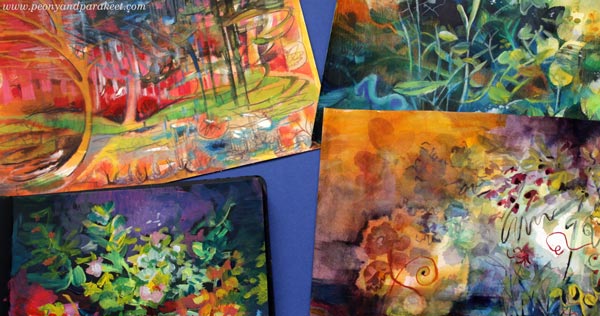
Liberated Artist Revisited will be published within a few weeks, but it’s likely to be a limited edition – only available for a limited time – so stay tuned!
Pleasures of Watercolor Painting
This week is about watercolor painting and the pleasures that can be found there!

Getting Inspiration
Now I’ve been busy with a lot of different things – a new big art project, the new course Freely Grown, commissioned work, etc. Despite that, I stole some time and went to look at old paintings online – skillfully painted portraits of women in fancy dresses. They always make me want to paint, even though I prefer to paint plants and flowers instead of beauties.
Look at this painting of the Duchess Alexandra Iosifovna, painted by Franz Xaver Winterhalter in 1859!
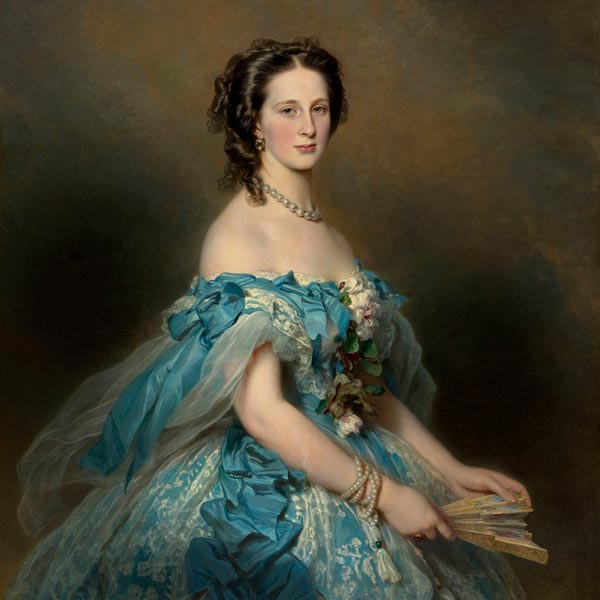
A detail – only a part of the painting is in this image.
The colors, the brilliant brush strokes, and all the delicate and decorative details are so inspiring!
I used to think that inspirational images must be the same as what I want to paint next. So, if I wanted to paint flowers, then I would only look at flower paintings. But nowadays, I love to be inspired by something different. Then the inspiration doesn’t limit me. It doesn’t depict what I should do and how, but sets an atmosphere that I want to follow.
Love for Good Watercolor Paper
After getting inspired, I opened the closet of my studio, as if secretly from myself, and tore a clean sheet from the watercolor paper pad.
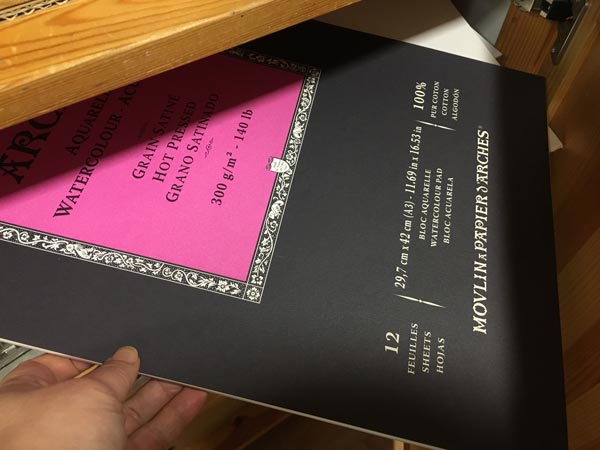
One hundred percent cotton, aah! So soft, thick, and ready to receive color. Good paper is expensive, but I paint better when I know in advance that I don’t want to waste a sheet.
Painting and Doing Other Stuff at the Same Time
When I steal time to paint, watercolors are an easy choice. Especially in the beginning, I can do one coat quickly and then let it dry for hours while I do other work.
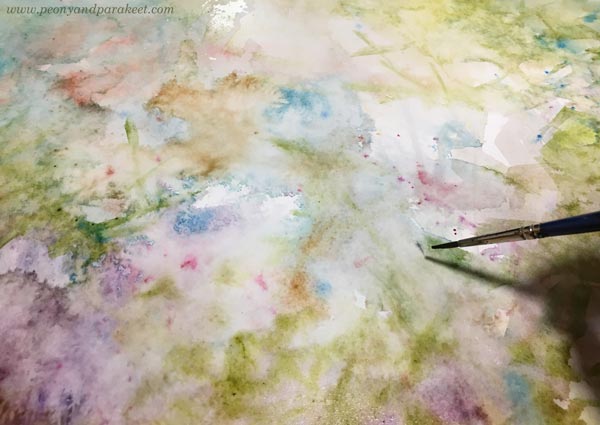
I can add details little by little, and the pauses often just clarify the idea of the subject of the painting. And when you paint slowly from light to dark, you can always fix it with the next layer.
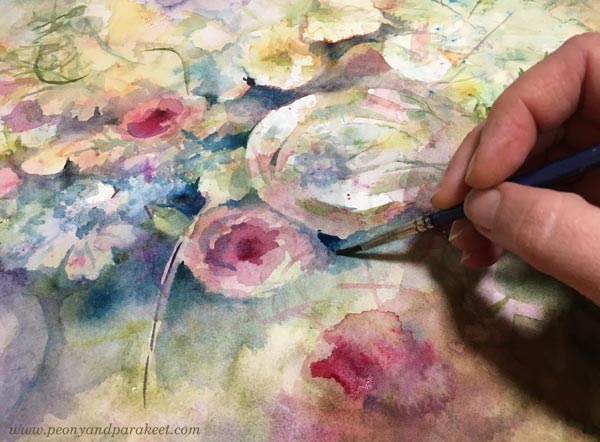
I often have my iPad nearby and listen and watch something at the same time while I paint.
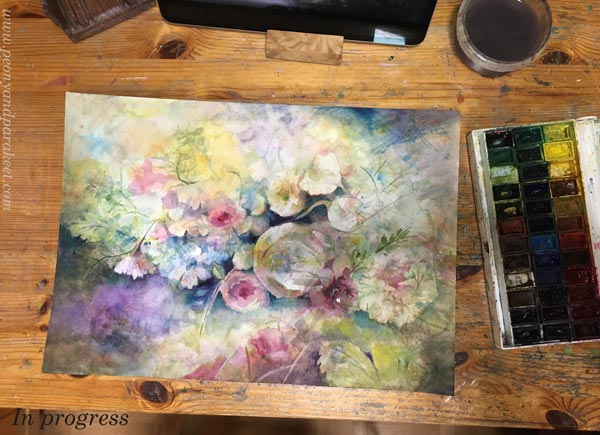
Luxury Combined with Minimalism
When finishing, it’s pleasurable to take just a little color on the brush, and often near the pan, if it has spilled there. I also check the corners of the palette, where unused paint easily remains. When the color is activated on paper, even a small amount becomes a treasure and an experience!
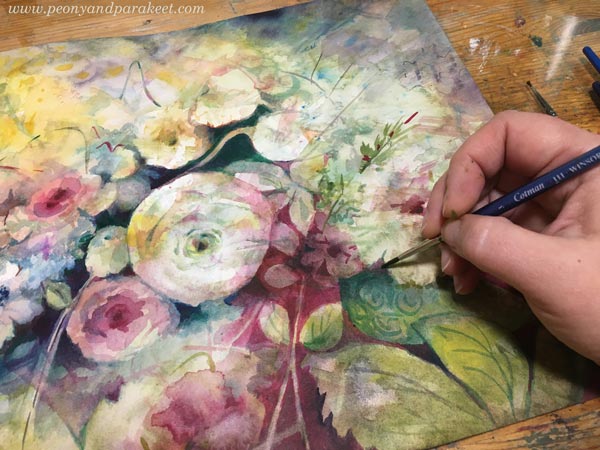
I always buy good artist-quality watercolors one pan and one tube at a time and use them right up to the end. If I buy a tube, I squeeze a small amount into a pan to dry and this way, use the tube in small portions. I love this kind of union of luxury and minimalism – definitely one of the pleasures of watercolor painting to me!

Finally, I wash the brushes carefully. Washing with water is enough for most brushes, but I often use soap to make sure that all the color has come off. With clean brushes, it’s nice to start a new painting again when I find time.
From Detail to Detail
Here are some pictures of the details.

I like to paint a lot of subtle details, and I love the warmth that yellow has.

Signing the piece before the final finishing touches makes sure that the signature fits with the rest of the composition.

I hope this blog post inspired you to pick watercolors and paint freely!
P.S. Freely Grown – You can still hop in!
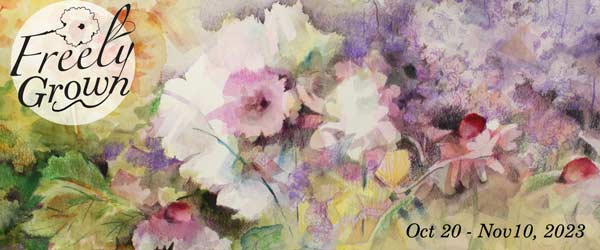
Painting Flowers Freely with Watercolors
This week, I share thoughts about my new course Freely Grown, and about its central idea of allowing the painting to grow freely.
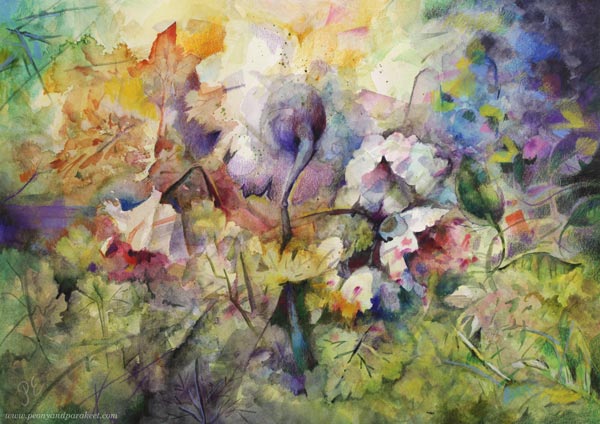
I’ve been in a really good mood lately. I have two great sources of joy. The first is that a new period in my life will begin this month when I start a year-long half-time grant period for digital artwork. Another source of joy is the new course Freely Grown, which I started making in the summer and whose material I have now been finishing.
Freely Grown
This course has been like a friend to me and I hope it will be like that to you too. Like paintings, courses also have their own character. This course is both playful and goal-oriented. I usually look for a suitable course name for many months, but this one gave me its name right away and I haven’t even thought about alternatives!
I’ve been so enthusiastic about the subject of the course that the abundance of plants is appearing in the work planner too.

Painting Flowers Freely
I am really inspired by the idea that a plant can grow freely. I don’t think it has to be a wildflower at all. Even if a plant grows in a flower bed, the gardener can let it sprawl. Similarly, our lives can have certain routines and restrictions, but still, imagination can grow freely.
When the brush spins and twists on the paper, it’s wonderful to indulge in its play. The painting can also grow freely.
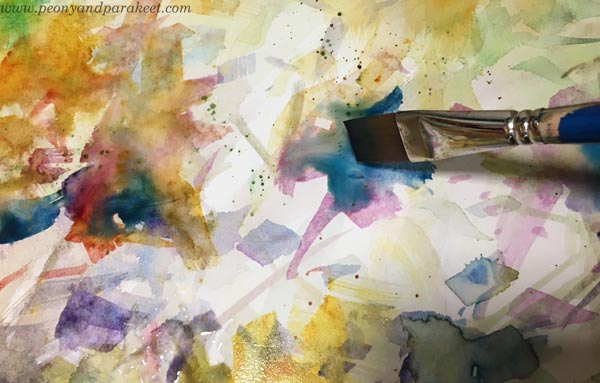
I like to consider that a painting is an independent party, not so much an extension of my own self. When I relax a little about what I want and let the painting suggest a direction, a new kind of pleasure is offered, even an adventure!
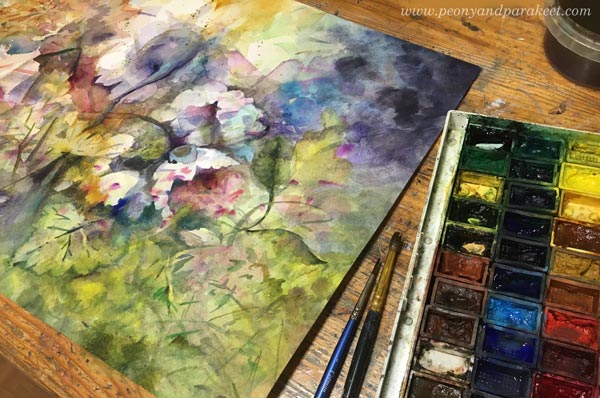
A surprising thing in this painting was that the largest flower suggested turning away from the viewer. I wondered if I could let it do that. Would the setting look impolite?
But when I study old flower paintings, their natural charm is that the flowers stretch out in every direction. So why couldn’t we let our flowers grow freely where they want?
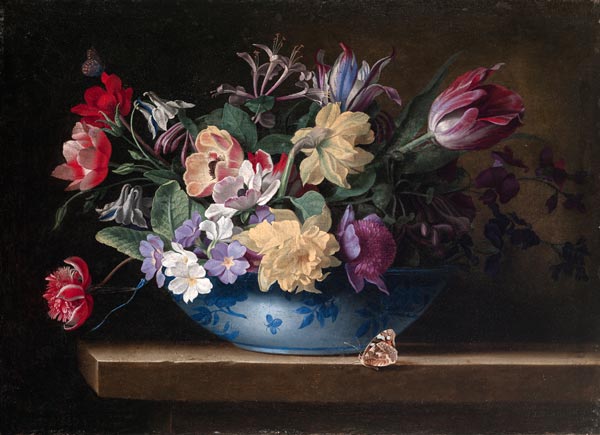
Only when the painting was about to be finished did I realize that the flower turns towards the light as if to welcome a new era! When you give the painting freedom, you always get more than if you strictly control it.

I think this A3 size (11.7 x 16.5 inches) is really nice because it’s big enough. It’s hard for the flowers to look expressive if they are very small.
Coloring on Watercolor Painting
When I finish with colored pencils, I aim for the colored parts to continue painting naturally.

Here you can see a close-up of the coloring. I always leave watercolor visible too.

I’ve done a lot of colored pencil stuff in the last couple of years and the number of pencils has reduced. But it’s fun that every now and then I can buy an out-of-stock color and introduce a new arrival to the old pals.

I love this abundance of flowers – born by painting freely, without reference pics!
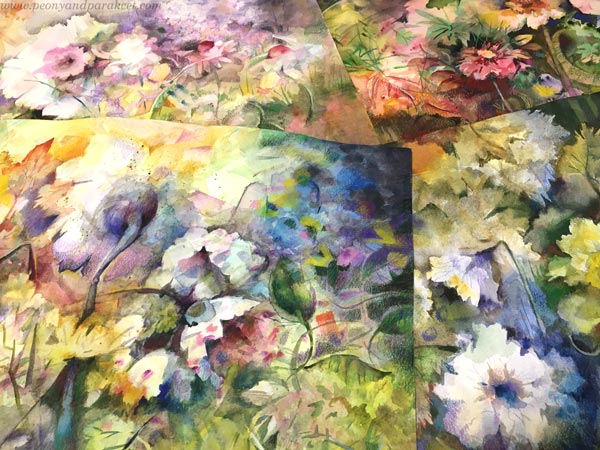
I hope you will come to the course!